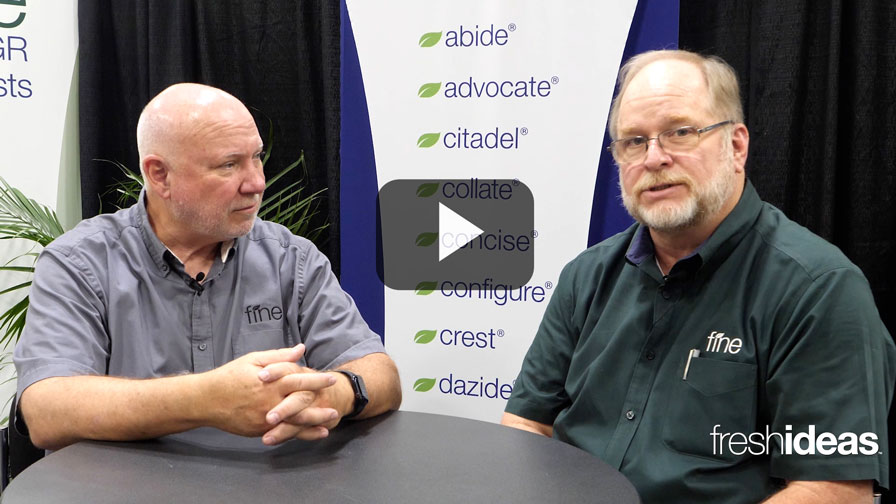Top Strategies to Help Growers Succeed with Their ERP Implementations

Companies invest in enterprise resource planning (ERP) systems to increase revenue, decrease costs, minimize risks, and gain more control over their business operations. Photos: Melissa Herbst
Enterprise resource planning (ERP) refers to a type of software that organizations use to manage day-to-day business activities — such as accounting, procurement, production, and supply chain operations.
Companies invest in ERP systems for four reasons:
- Increase revenue
Decrease costs
Minimize risks
Gain more control
Another reason why companies invest in ERP software is to prepare to sell the business or if they just bought a business. This illustrates just how effective ERP systems are in helping business leaders gain awareness and clarity of the company.
Make Enterprise Resource Planning Count
In my role, I support companies through their decision and implementation process. I have watched the ones who succeed and watched the ones who struggle. I have seen projects with the same consulting team, the same technology, and the same scope succeed and fail. So what are the ones who succeed doing? Here’s a rundown of the attributes that most successful ERP projects have in common:
• Clear project goals — The growers who succeed clearly define their project goals and know the key challenges to address. The goals and challenges are also understood by all members of the project team. If driving revenue is the motivator, make sure every process you address that’s within the scope of the project impacts revenue. If mitigating risk is a motivating factor, understand the biggest risks to the most expensive errors and focus there. Don’t get distracted by attractive features — make sure you chase problems with a measurable impact on the business.
• Engaged leadership — The projects that succeed have executive sponsors — the people who write the checks or own the budget — engaged throughout the evaluation and delivery process. Company leaders do not need to be in the day-to-day meetings, but they should engage on a regular basis to review milestones and the budget, and to work with the project team to alleviate any obstacles that the team experiences or anticipates.
• Centralize decision-making — One of our clients captures the essence of this attribute, sharing, “I believe a central decision-making process is key. When you have opinions from 75 people, you get software going in different directions — what is good for one department is not always good for another. The focus needs to be on what’s the best direction for the organization. Yes, get everyone’s thoughts and ideas, because they are on the front lines, but then view each through the proper lens.”
• Project team — Identify people who understand the business, their functional area, and the need to change. Select subject matter experts, people who know the day-to-day details of their functional area well. Select process owners, people who will be able to decide and finalize how the process will work for the department. Elect a project manager — identify an individual who can be the chief cat herder and gets people to listen when they ask for something. If the project manager understands the business, that’s even better. Sometimes an outsourced project manager can work in a pinch, but also realize it will take extra time to understand the business, the partner, and the technology.
• Dedicate time — Make sure the project team can allocate the appropriate amount of time to the project. Potentially divert work from key project resources to other individuals and consider bringing in temporary labor to relieve the workloads of project resources.
• Customizations — Consider changing processes to meet the technology, but do not always customize just because individuals are comfortable working a certain way.
• Phased approach — If you are a smaller organization and do not have depth, consider a phased approach to rolling out new capabilities.
• Test, test, test — Make sure you test and test a lot. It is easier to fix things before going live than it is after.
• Go-live date — Do not go live right before your busy season. Consider going live before the fall when things are slower. This lets your team adjust to the new way of working.
• Independence — During implementations, clients rely heavily on their partners and should work towards self-sufficiency once live. Assigning an internal super user helps, a person who will trouble shoot internal questions first and that person engages the partner for help. It is good to use your partner for support, but make sure you try to support yourself first.
Go-Live Is Just the Beginning
Your ERP journey does not end when you reach the go-live stage. As you and your end users get accustomed to the system, analyze what’s working well and what isn’t. There will be tweaks to the current functions you will want to make along the way, and there will be new functionality you want to add as your business grows.
“Software is not something you buy and use,” says Jeremy Deppe of Spring Meadow Nursery. “It’s a journey — enjoy the ride!”










